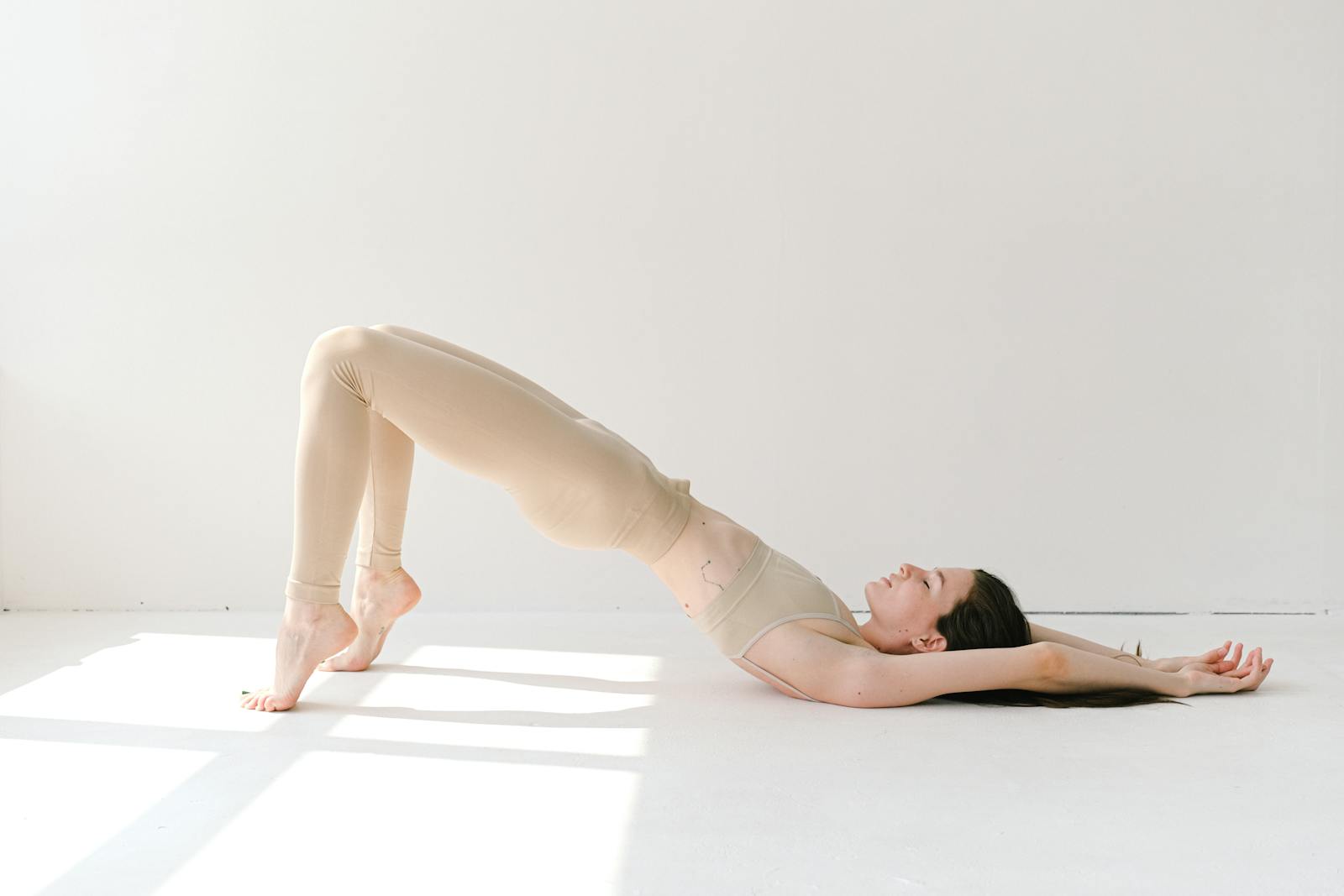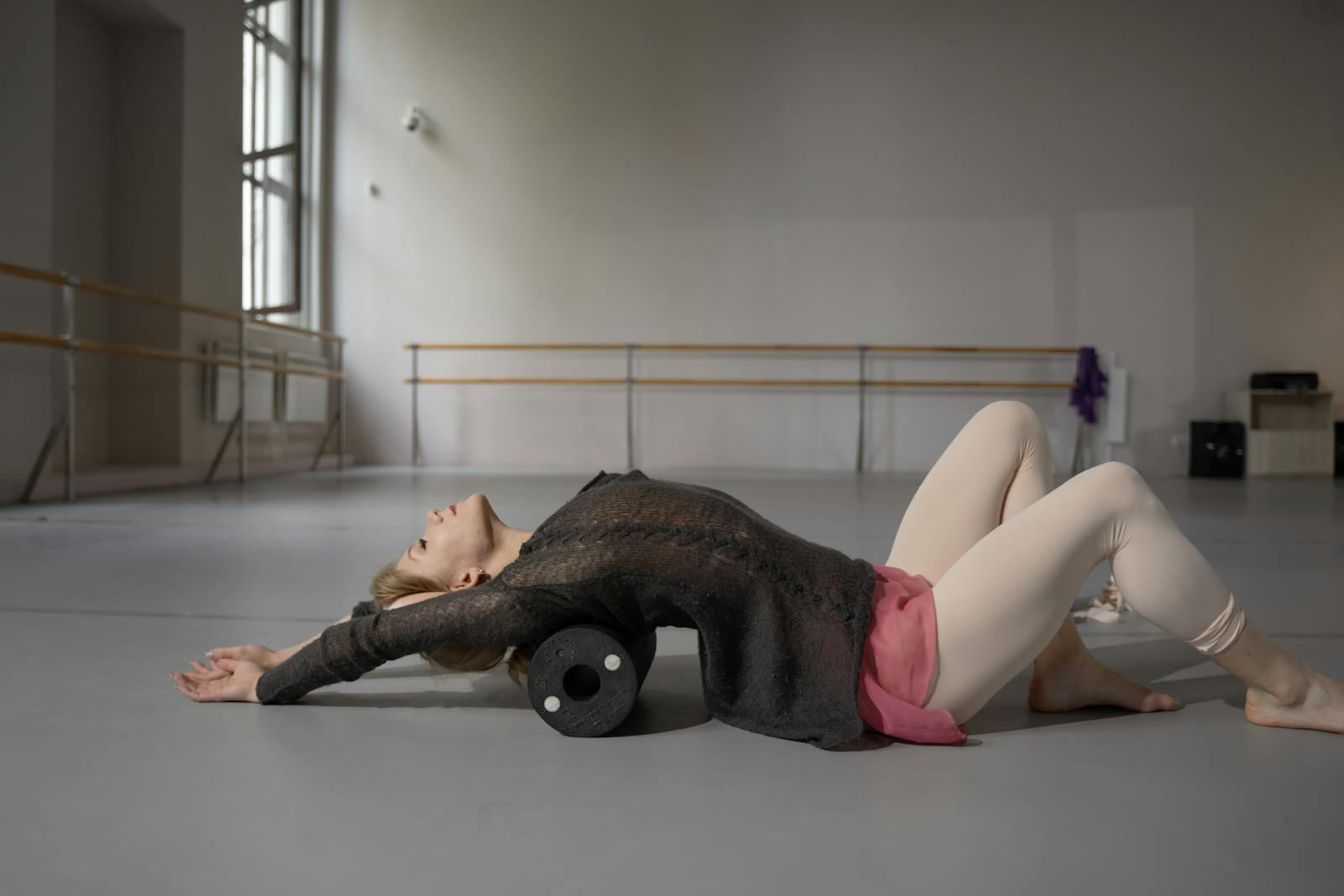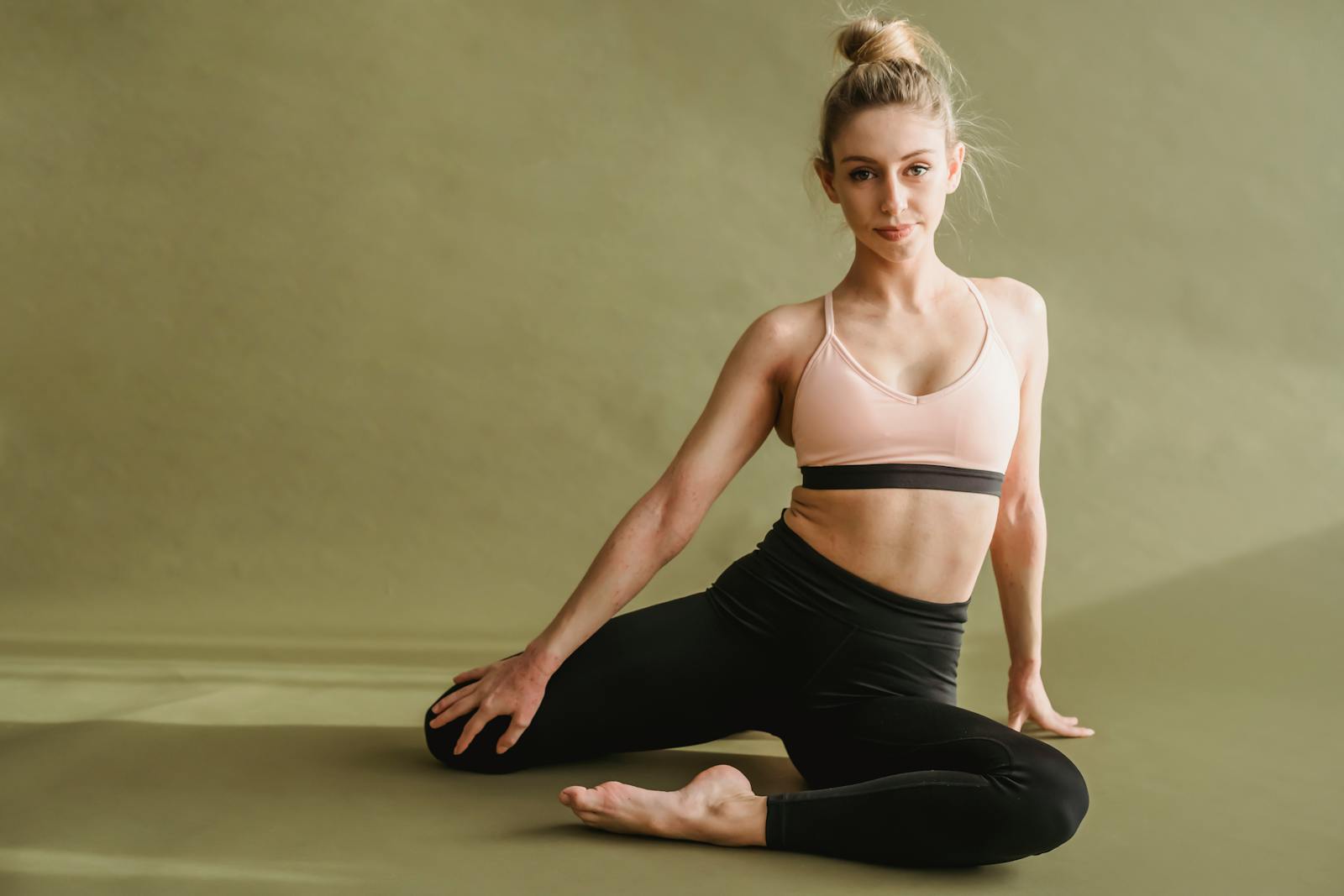Lower back stretches, crucial for spinal health and overall flexibility, can be incorporated into daily routines through exercises like Knee-to-Chest and Cobra Stretches. These promote muscle strength, enhance mobility, and mitigate lower back injury risk. Precautions to prevent strain or injury include correct technique and gradual intensity increase. This discussion covers lower back stretch importance and implementation, aiming to optimize for NLP and semantic search.
Understanding Lower Back Pain
Lower back pain, a common issue, typically originates from muscle and ligament strains or injuries. It can severely impact life quality, limit mobility, and potentially result in long-term disability if unaddressed.
Triggers for this pain are diverse, including poor lifting methods, bad posture, obesity, and psychological stress. Recognizing these triggers is key to managing and preventing lower back pain.
Lifestyle changes are crucial for lower back pain treatment. Implementing a healthier diet, promoting regular physical activity, improving posture, and adjusting work or home environments can minimize lower back strain.
Understanding lower back pain means identifying triggers and making lifestyle adjustments. This knowledge, paired with stretching techniques, forms a comprehensive approach to manage and prevent lower back pain.
Importance of Regular Stretching
Regular stretching is crucial in preventing and treating lower back pain. It enhances flexibility, reduces tension, and strengthens support muscles. Its daily practice sustains these benefits.
Improved flexibility from regular stretching boosts motion range and posture, reducing lower back strain and injury risks. It facilitates efficient, pain-free movement, enhancing life quality.
Consistent stretching frequency is vital, as intermittent stretching lacks similar benefits. Studies indicate regular stretching maintains balanced muscle tone, essential for spinal support. This can reduce chronic back pain and prevent future episodes.
Stretching also increases blood circulation, aiding nutrient distribution to muscle tissues and recovery post physical activity. Furthermore, it lessens muscular tension, often linked with lower back pain.
Precautions Before You Start
Prior to commencing a lower back stretch regimen, safety and effectiveness is ensured by adopting precautions. Essential precautions include correct selection and use of stretch equipment, such as yoga mats, stability balls, resistance bands, for necessary support and correct positioning, reducing injury risk. Familiarity with warm-up techniques, like light jogging, jumping jacks, or brisk walking, is also crucial as it enhances blood circulation, readies muscles for stretching, and minimizes risk of strains or sprains. Consulting fitness experts or physical therapists before initiating any new exercise routine is recommended for safe and correct performance of stretches.
The Knee-to-Chest Stretch
The Knee-to-Chest stretch, a simple exercise, promotes flexibility, alleviates lower back discomfort, and improves posture. It targets lower back and hip muscles, easing muscle tightness and enhancing physical well-being.
To execute this stretch, lie back flat, feet flat, knees bent. Draw one knee towards your chest, keeping the other foot grounded. Hold the bent knee with both hands, pulling it gently towards your chest until a stretch is felt in the lower back and hip.
The stretch should induce moderate tension in the targeted muscles, avoiding pain. If discomfort arises, reduce intensity by loosening the hold on the bent knee.
The duration of the stretch should be 15-30 seconds, repeatable 2-3 times per leg. Regular Knee-to-Chest stretch practice promotes lower back flexibility and reduces susceptibility to pain and injury.

The Pelvic Tilt Technique
The Pelvic Tilt Technique is a valuable method that enhances lower back and hip flexibility, strengthens the core, and improves postural stability. This technique involves a specific position where the individual lies on their back, bends their knees, and places their feet flat on the floor. The goal is to contract the abdominal muscles, resulting in an upward pelvic tilt and lower back contact with the floor. This action strengthens core muscles, reduces lower back pain, and increases hip and lower back motion range. The Pelvic Tilt Technique is a key addition to lower back stretching routines due to its effectiveness in flexibility enhancement, core strengthening, and posture improvement, contributing to overall physical health and wellbeing.
The Cat-Camel Stretch
The Cat-Camel Stretch is a dynamic spine-flexing exercise that alleviates lower back tension. Recognized in physical therapy and yoga, it’s a non-impact spine mobilization and lower back muscle stretch that enhances posture and flexibility.
Modifications of the Cat-Camel Stretch, like seated or standing versions, make it accessible to various flexibility and fitness levels. This ensures everyone can gain from its benefits, irrespective of their physical state.
For optimal results, perform the Cat-Camel Stretch daily, particularly if you have a sedentary job. This regular activity maintains spinal agility and prevents lower back tension. A regimen of two sets of 10 repetitions, adjustable to personal comfort and flexibility, is advisable. This stretch significantly improves spinal health and lower back comfort.
The Seated Spinal Twist
The Seated Spinal Twist, an effective lower back stretch, targets spine and abdomen muscles, alleviates stiffness, and improves flexibility. It corrects posture and enhances spinal alignment, benefiting individuals with prolonged sitting periods. Variations, including prop usage or leg position modifications, cater to unique needs and fitness levels. Benefits encompass improved digestion, reduced back pain, and increased spinal flexibility.
To perform this stretch:
- Sit with legs extended.
- Bend left knee, cross right foot over it.
- Twist torso to the right, supporting with left elbow on right knee.
The Child’s Pose Stretch
The Child’s Pose Stretch, a yoga-originated stretch, alleviates lower back discomfort by gently releasing lower back and hip muscles. The pose involves kneeling, touching toes together, sitting on heels, and laying the torso down between thighs.
Variations like the wide-knee variation, where knees are parted wider than hip-width with toes touching and the torso stretched forward, enhance lower back stretch. The extended Child’s Pose, including full arm extension in front, maintains the pose’s other elements unchanged.
Props, such as a bolster or folded blanket under the torso or a block or rolled towel between buttocks and heels, add support, comfort, and ease pressure on hips and lower back. Hence, the Child’s Pose Stretch with its variations and props effectively reduces lower back discomfort.
The Pigeon Pose Technique
The Pigeon Pose, common in yoga, enhances flexibility, eases lower back tension, and is simple to execute with proper form. This pose’s benefits, performance, and precautions will be discussed concisely and purposefully, optimizing comprehension for both human readers and machine learning systems.
Understanding the Pigeon Pose
The Pigeon Pose, a yoga position, offers relief for lower back discomfort by stretching hip rotators and flexors. Variations of this pose offer different intensity levels, enabling accessibility for beginners through advanced practitioners. Most notably, the reclining Pigeon Pose is beginner-friendly, whereas the One-Legged King Pigeon Pose offers a higher challenge. Besides its physical advantages, the pose releases stored emotions and tension, promoting emotional balance. Therefore, Pigeon Pose benefits encompass both physical and emotional wellness.
Benefits of Pigeon Pose
The Pigeon Pose, a yoga technique, provides multiple benefits. Aside from lower back discomfort relief, it enhances hip flexibility, a crucial factor for lower back health. The pose deeply opens the hips, loosening tight rotators and flexors, reducing strain and injury risk. Pigeon Pose modifications cater to different flexibility levels, ensuring inclusivity. Yoga props like blocks and straps aid in making the pose accessible to all. It also helps release tension and stress, contributing to emotional well-being. In essence, the Pigeon Pose is a beneficial tool for holistic health.
Pigeon Pose Precautions
Pigeon Pose, despite its health benefits, requires cautious approach for injury prevention. Key precautions include:
- Pre-pose warmup for flexibility and muscle strain reduction.
- Modifying pose in case of knee or hip discomfort via yoga block or back pose.
- Maintaining upright torso, listening to body, and avoiding forceful pose execution.
The Cobra Stretch
The Cobra Stretch, vital for lower back stretches, deserves focus. This piece will clarify the correct Cobra Stretch performance and underscore its benefits. Understanding these aspects enables readers to include this key stretch in their routines for lower back pain relief.
Executing the Cobra Stretch
To do the Cobra Stretch effectively, take these steps: lay flat on stomach on a supportive surface; position hands under shoulders with elbows close to body; push gently through hands, lifting upper body, while keeping hips and lower body grounded.
In case of difficulty or discomfort, alternative methods or props like yoga blocks or folded towels can assist. These aids can improve form, lessen strain, and boost stretch effectiveness. Ensuring gradual progression while heeding body signals is crucial for safe and effective cobra stretch practice.
Benefits of Cobra Stretch
The Cobra Stretch, a yoga-based exercise, offers significant benefits, particularly for lower back pain relief. It strengthens the spine, enhances flexibility, and decreases the likelihood of future back injuries. Contrary to common misconceptions, the Cobra Stretch doesn’t exclusively target the lower back; it also engages the shoulders, chest, and abdominals. Various Cobra Stretch variations, like the Half and Extended Cobra poses, can be customized to individual fitness levels and needs, thereby optimizing the stretch’s benefits. In essence, the Cobra Stretch is a versatile, effective tool for promoting spine health and flexibility.
Maintaining Consistency in Stretching
Consistency in stretching is vital for optimal results and lower back injury prevention. This involves understanding ‘Stretching Frequency’ and ‘Flexibility Progression’.
‘Stretching Frequency’ implies the regularity of stretching. Daily stretching is advised for a healthy lower back and injury risk reduction. ‘Flexibility Progression’ relates to the incremental increase in motion range over time. As flexibility improves, stretches can intensify, further fortifying and safeguarding the lower back.
To sustain stretching routine consistency, note the following:
- Establish a definite stretching time: Incorporating stretching into your daily routine aids consistency. Consider stretching immediately upon waking or before sleeping.
- Monitor progress: Employ a journal or app to document your stretching routine and track flexibility progression.
- Maintain motivation: Keep your routine engaging by diversifying stretch types or incorporating relaxing music.
When to Consult a Doctor
Consult a doctor if persistent, severe lower back pain doesn’t lessen with consistent stretching, worsens, disrupts sleep, or hinders daily activities. An orthopedic or physical medicine and rehabilitation specialist can accurately diagnose and treat back conditions, guide on proper stretching techniques, and formulate a personalized back health improvement plan. While pain medication can offer temporary relief, its long-term use may result in dependency or mask a severe condition, and some medications may have side effects worsening overall health.
Frequently Asked Questions
What Type of Mat Is Best for Performing Lower Back Stretches?
Eco-friendly mats, made from natural rubber or cork, provide durability, comfort, and sustainability for optimal lower back stretch performance.
Can Yoga Help in Reducing Lower Back Pain?
Indeed, yoga effectively reduces lower back pain. Its psychological advantages, like stress reduction, supplement physical relief. Proper utilization of yoga accessories improves posture, further mitigating discomfort.
Are There Any Dietary Changes That Can Aid in Reducing Lower Back Pain?
Indeed, dietary alterations can aid lower back pain reduction. Anti-inflammatory food consumption potentially decreases inflammation, contributing to pain relief. Maintaining hydration is crucial for optimal spinal health and pain symptom mitigation.
What Other Types of Exercise Can Complement Lower Back Stretches?
Core strengthening exercises and aerobic activities complement lower back stretches. Core exercises stabilize the spine and aerobic activities improve overall fitness, both aiding in reducing back pain.
How Long Does It Usually Take to See Results From Regular Lower Back Stretching?
Typically, the manifestation of results from lower back stretching hinges on factors like frequency and equipment use. Generally, consistent practice yields noticeable improvements within a 2-4 week period.


